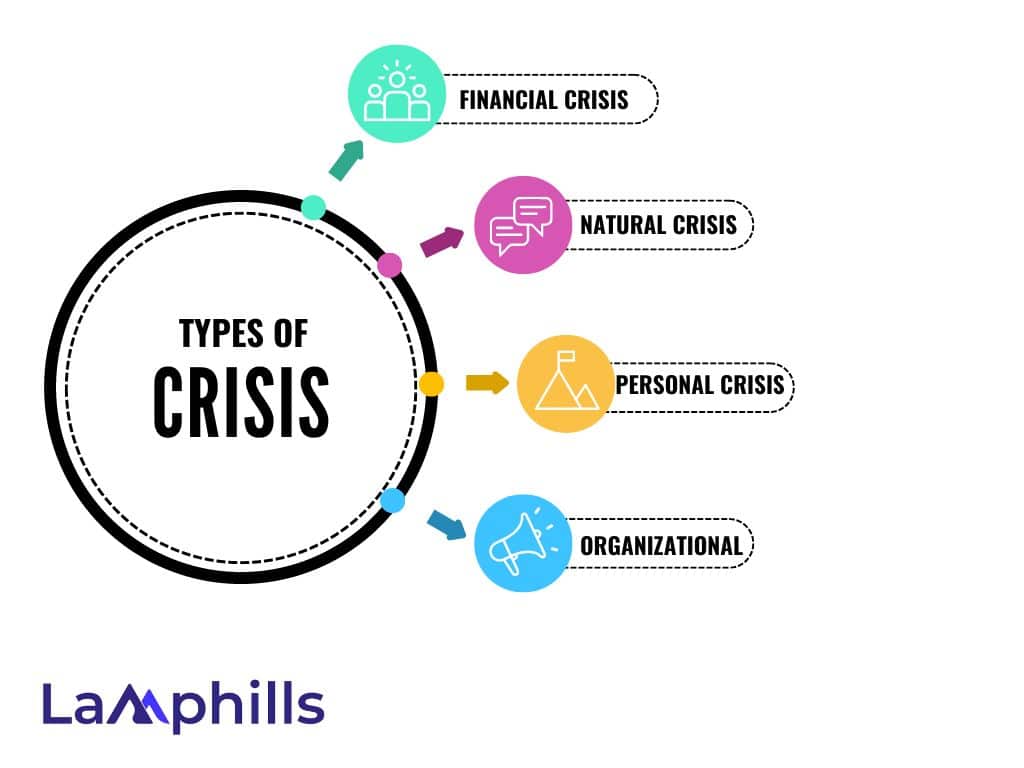Brand crisis management involves the act of creating, implementing, and working diligently with all staff members to address and recover quickly during a crisis. I remembered an incident that happened in my brand that almost caused the extinction of my brand. That is when I knew that knowing how to manage a brand crisis was paramount for any brand owner.
Because of the rise of the digital landscape, I discovered that managing a brand’s reputation is an evolving challenge. Knowing that because of social media, global economy interconnectedness means that brand crises can emerge unexpectedly.
I had an encounter with a reporter, and she trolled my brand to the extent that I started losing my customers, my brand stopped growing, and my workers started resigning. I was so frustrated, but I managed the crisis well using the “brand crisis management plan.”.
Dr. Smith Morgan once said, “Having the ability to manage your brand crisis effectively is essential to maintaining the loyalty and trust of your stakeholders, customers, and the public.”. A well-executed response can reduce damage, promote the credibility of your brand, and preserve your reputation. He said this at an event I attended recently.
All organizations intend to create the best experiences for their customers, but most times things do happen that produce the opposite effect, which is “a crisis.” At some point or another, brands do experience a crisis. What defines a strong brand is how those crises are handled.
In this comprehensive guide, I will explore the steps and ways to help you manage your brand crisis successfully and ensure that your brand survives and grows afterward.
Let’s begin
Key Points
- Brand crisis management is a way to solve catastrophic situations that will affect the brand.
- A crisis may be self-induced and caused by external factors.
- There is a need to make a plan for crisis management before the crisis sets in.
- Always have a professional crisis management team.
- Make sure your spokesperson is a good orator.
- There are different kinds of crises a brand can experience which include financial, natural, etc
- Having a crisis in your business can affect your reputation.
What Is Brand Crisis Management?
Brand Crisis management is a process that an organization follows to solve situations that are catastrophic to the brand. A crisis has bad effects on the operations of a business and affects the finances of your business.
It also involves the act of creating, implementing, and working diligently with all staff members to address and recover quickly during a crisis.
Crisis management is a process that equips managers and employees with the power to face unpredicted situations in organizations. It allows them to be able to manage their emotions, minimize risks, and respond to changes effectively even under pressure. It helps prevent the situation from getting worse for your business
Most business leaders always put off crisis management when things are going well with their businesses. With such mindsets, so many business leaders face repercussions that affect their business operations.
When my brand was in crisis, my professionals did their best to concoct the best crisis management plan.
Whenever I want to combat any crisis, I look for a well-detailed process that not all public relations firms can handle easily because a good plan incorporates an emergency response, continuity of the business, etc.
Read Also: Best Steps To Effective PR Crisis Management
Brand Crisis Management: Types of Crisis

Some crises can be self-induced, or they might be the result of external forces.
Self-induced crises are crises that occur within an organization. They include cyber-attacks, laying off of some staff, and poor customer service that goes viral.
In my office, we had a self-induced crisis when my employee posted on my website asking why his wife Janet was fired from the Human relations job she’d held for 20 years.
It wasn’t long before the hashtag #justiceforJanet began trending. Some people even started a petition for answers that garnered over 20,000 signatures. People began adjusting our Goggles pages for the brand to feature photos of Janet. Other brands capitalized on our bad press. There was even a satirical retelling of the story on YouTube, which garnered over 8 million views.
Some external forces can be the result of a crisis in the organization, and these crises are beyond the organization’s control. Examples are natural disasters, security breaches, and false information about the company that hurts its reputation.
Internal crises can be managed or avoided if the company enforces strict compliance protocols regarding policies, rules, and regulations among employees and management.
You insure your health because of unforeseen abnormalities that must be attended to in a matter of urgency in the same way that businesses are insured through Crisis Management Coverage
These crises can take a toll on some business areas. For this reason, developing crisis management plans concerning the different crises that businesses are likely to experience should be considered.
#1. Financial Crisis:
When a business experiences a dramatic fall in demand for its product or services. Assets will lose their value and the business will be unable to pay their debt. I will recommend inventory software like Wix Etsy integration to take charge of your stock and prevent your business financial crisis. I recommend this because that was what I used when I had a financial crisis in my business.
#2. Personal Crisis:
This is when an employee is involved in an illegal activity. This misconduct can be related to the individual’s work life, even if it didn’t occur at the workplace.
#3. Organizational Crisis:
If a business wronged its customers by impacting their customers,. This includes when an organization keeps a piece of vital information from customers who deserve to know the details. There was a time when my customers started complaining about my business when my organization stopped sending the new price of goods to my customers. This affected my brand.
#4. Natural Crisis:
Tornadoes, hurricanes, and floods are all examples of natural crises that can damage or ruin a business space. The location of a company might be prone to various natural disasters occurring throughout the year. I was a victim of a natural disaster when my office was in North California, One day, we experienced a fire outbreak that burned my office to ashes. This affected my business, but since I moved my office, I haven’t experienced this again.
Tips for Better Brand Crisis Management
#1. Be Vigilant to Identify Weaknesses Before A Crisis Comes
The most important stage of your crisis management plan occurs even before the crisis starts. Business owners should identify possible perils. Send stakeholders for training, and also have a good response plan. This is the best time to get a “Crisis Manager.”
The adage, ‘Prevention is better than cure’ comes into play in this scenario. To ensure that the reputation of the brand is not affected, prepare early to face issues in a robust way to protect the company’s reputation.
Also, there is a need for you to work closely with senior management, HR, communications, legal personnel, outside advisors, and experts across the business. Always assess the potential of the risks and the impacts they might cause and also secure your vulnerabilities.
It is always very painful to know that your business has some weaknesses but knowing them earlier will help in the crisis management plan.
Make crisis management plan a standing item on the risk committee agenda and always assess internal risks. There is a need to always map out threats with their size and impact and also have corresponding plans on how to address them.
#2. Allowing Your Employees to Manage Crisis Effectively
Embark on training for your staff, suppliers, and customers. Create an avenue for crisis scenarios to make their lines of communication strong and also establish a chain of command that is understandable.
Make sure that your employees who interact with the public always have the necessary information that reflects the company’s acknowledgment of the situation and that they are working hard to solve the problem.
#3. Arrange for a Professional Crisis Management Team
Hire individuals from many disciplines to assess your backdrops properly. In this team, there is a need for your CEO, legal counsel, and leader of public relations to be backed up by senior executives.
In an event I attended a few weeks ago, Mr. Colter Shaw said, that business owners need to employ a professional crisis management team who will help whenever the need arises.
#4. Examine your Weaknesses
Whenever I want to prepare a response plan, I always write down my weak points. I also always hold a brainstorming meeting with my crisis team and explain the factors that can spoil the company’s reputation.
By organizing meetings that involve all your employees, you can reduce the high rate of something critical happening.
#5. Empower Your Social Team For Success
It is paramount for the social team to know that success is the only target. Implement role-based permissions to keep your company’s social compliance infrastructure secure. Formerly laid down strategies and strategies are critical during a crisis, and employees should also have tools to carry out their duties properly.
Knowing social listening provides power for a well-crafted response that is informed.
#6. Create a Crisis Management Plan
When drafting your business plan, Crisis management should be a vital point. It is crucial to adhere to the plan in arrangement with your business that is outlined based on the findings of your weakness audit
If you are skeptical about your first step, your next option should be reverse planning, therefore, decide your goals and work on them.
Your crisis plan must address the following:
- Possibility plans
- Stakeholders
- Availability of emergency funds
- Chain of command for decision-making
- Essential communication fracture
#7. Have a Top-Notch Communication Plan
Your business needs the best spokesperson. The spokesman must represent your company during a crisis. You need the best orator you can find who can not succumb to pressure and will defend the brand even when the brand is under a lot of accusations.
The spokesperson must be comfortable with written statements, live interviews, etc.
Also, you need versatile experts who can draft a comprehensive statement for the media.
I met with Martha Grey, who happened to be the spokesperson of the Love and Bite brand, I was amazed at the way she was boldly defending her brand following the accusations that were made about the brand. I told myself, ” Every business needs Martha Grey.”
Read Also: CRISIS COMMUNICATION: Definition and Best Strategies
Effects of Crisis on Your Brand
When a hashtag for your brand trends on social media, it’s either you have done something beautiful or people are dragging your brand. A tweet can cause a stir on social media, and your brand will be affected.
One of my brands was so popular among college students that they came in daily to enjoy a burger with their favorite ingredients. But in 2000, it suffered a great hit when some college students fell ill after eating burgers in my shop. Many victims experienced severe symptoms that caused them to be hospitalized. To make matters worse, my company’s stock prices fell drastically. Customers, stakeholders, and victims were not happy with the development. However, I tendered an apology letter to the public and outlined all the measures the company was taking to fix the problem.
Businesses are affected in these ways:
#1. Damage Of Reputation
When I had a crisis in my brand, it affected my brand’s image and I lost a lot of investors and customers. Social media content also added to the storm.
Therefore, having a crisis in your brand can damage what your brand is known for.
#2. Disruption of Business Operations
There will be pressure on employees and there will be skyrocketing stress levels and employee turnover, especially when you want a lasting business.
After the crisis in my business, my employees felt a lot of pressure and stress because we wanted to put our business back on the market.
#3. Profit Rates Falling
I lost a lot of customers after the crisis and it was very difficult to get people to associate with us. This made my profit diminish badly and it affected my business.
Read Also: Brand Awareness Ideas: Most Effective Ideas in 2024 (Practical Tips)
Conclusion
No business can’t have a crisis, so the best is needed in preparing for one. This guide provides you with several tips for brand crisis management and, the effects of the crisis on a brand, I hope you learned about crisis management as much as I enjoyed writing it
Frequently Asked Questions
Mention the Elements of Crisis Management
In the 1980s, the study of crisis management originated with large-scale industrial and environmental disasters. In public relations, it is the most important process. Three elements are common to crises:
- Organizational threat
- An act of surprise
- There is limited time for decision-making.
What Is the Structure of Crisis Management?
The incident commander is in charge of all the crisis responses in the structure of crisis management. There are leaders in charge of planning, finance, operations, etc.
What Are the Ways Companies Prepare for Crises?
It is important to put up plans that are likely to prevent disasters. There should be measures ready for activation whenever there is an emergency. There should be a follow-up plan to bring back the company’s reputation.
What Role Does Marketing Play in Crisis?
The marketing team is the guardian of the brand during a crisis. The guardian’s role involves making sure that all communication and actions project the values and ethics of the brand. They balance and address a crisis effectively and also maintain the integrity and reputation of the brand.
What Role Does the CEO Play in Crisis Management?
In times of crisis, all teams look up to the CEO for guidance. The CEO makes sure everybody is calm, stabilizes the organization, and is also a resilient and fast decision-maker.
Related Articles
- How To Measure Brand Awareness: KPIs To Look Out For
- The Top 2024 Brand Mention Tools (All You Need)
- CRISIS COMMUNICATION: Definition and Best Strategies
- Best Steps To Effective PR Crisis Management






